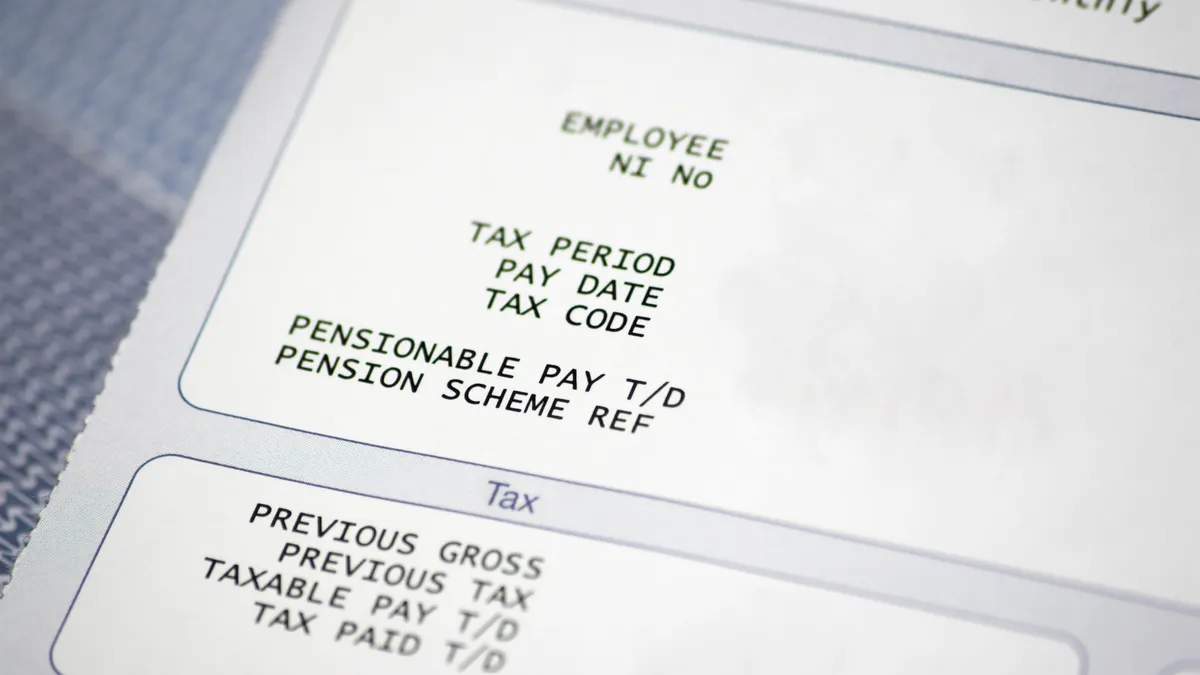Every pay period, your employees can look at their pay stub and see how much they're earning. But do they see the whole picture?
Pay stubs may contain standard employee information such as salary, bonuses, taxes and other deductions, but many receive additional benefits and perks not listed on a pay stub. Some of those perks may be obvious, like the use of a company car, but others may be overlooked or forgotten, like a flexible work schedule, commuter subsidy or a gym membership.
Total compensation statements (also called total rewards statements) give employees a broader look at what their employers provide.
What is a total comp statement and why does it matter?
In short, a total compensation statement is an annual statement that communicates the total value of all the rewards an employee receives for their time, effort and talent, according to Alison Avalos, director membership and total rewards strategy for WorldatWork.
The broader focus on total compensation has evolved over the last few decades, Avalos said in an interview with HR Dive. "What started to [emerge] in the latter part of the 90s and into the 2000s was the idea that there are a lot of other levers, if you will, that an organization can pull to offer something of value to its workforce," Avalos said. But offering more perks isn't enough; companies have to make sure employees are aware of what the business provides, she said. "The idea of thinking broadly about what you communicate to your employees about that value became seen as a real opportunity."
In addition to salary, total compensation statements should outline medical benefits, flexible spending accounts, stock options, bonuses, flexible spending account, disability, employee assistance programs, tuition assistance, and paid leave, she said. But other benefits that may be harder to quantify should be included as well, such as flexible schedules, the opportunity to work remotely, use of an on-site concierge, pet insurance, on-site child care, company-provided lunches and company discounts.
With a tight labor market, it's especially important for employers to make sure employees consider all aspects of their job benefits. When you come back to the core, Avalos said, you want to include the things that are deciding factors in an employee's mind.
Who uses total compensation statements?
According to PayScale's 2018 Compensation Best Practices Report, 36% of U.S. organizations use total compensation statements.
Employers are finding statements to be useful tools for communicating with employees about compensation, Lydia Frank, PayScale's vice president, content strategy, told HR Dive via email. Compensation conversations can be highly charged, she said, and providing a total compensation statement gives employees information to which they can refer back. "Total compensation statements can fill in those blanks in memory and reinforce your organization's compensation approach — if that's something you’ve outlined in the report," she said.
Frank said that according to the PayScale report, 40% of top performing companies are likely to use total compensation statements, compared to 36% of typical companies. Larger companies with 5,000 or more employees are more likely to use the statements than smaller ones. And employers in the finance and insurance industry are most likely to use them (51%) while those in the food, beverage and hospitality industry are least likely (26%).
The statements may well be worth considering: "We've received incredibly positive feedback from organizations who choose to start utilizing total compensation statements saying that it absolutely helped with compensation communication and overall employee retention," Frank said.
Concerns about total comp statements
But if total compensation statements are so useful, why don't more organizations use them? Some employers worry that employees will be dissatisfied with the information in the statements, or will compare their benefits to those of co-workers and others in similar jobs in the market. But that worry shouldn't be an excuse to avoid the conversation, Frank said.
"I'm a fan of open communication, so I believe any potential downsides are easily overcome," Frank said. "If you include comparisons to market data and an employee's pay is lower than market, it's critical to ensure you're explaining why that's the case as well as what the employee can do to impact their earning potential at the organization." This means that total compensation statements can help open the door to performance and career path conversations, she said.
Avalos agreed. Communicating regularly and transparently about what you're offering will improve retention. "The organizations that do this best do it once a year," she said; "they want employees and employers to come and ask questions anytime.”
Companies also may hesitate to provide total compensation statements for fear of making errors. Accuracy is monumental, Avalos said, and planning is critical before launching the process. The process can be a lot of work, she added: "If you're an organization that has never done a total reward, total compensation statement, know what you want to say." If you have a large company, field test the statement with 100 to 200 employees using fake data, if necessary, to get feedback and make improvements, she suggested. Even a perfect endeavor can lead to questions, she said, but most successful organizations feel that's a good thing.
"A company can invest a lot of money into its workforce but if that workforce doesn't feel that investment, doesn't identify it, recognize it and place the same value on it, really the organization is wasting money," Avalos said.




















